A Culinary Journey Through Budapest’s Christmas Markets
November 27, 2025
When winter arrives, Budapest transforms into a sparkling wonderland. The city’s squares and streets glow with twinkling lights, festive garlands, and the irresistible aroma of warm drinks. Budapest’s Christmas markets are among the most beautiful in Europe, attracting tourists from all over the world. But beyond the decorations and souvenirs, the real highlight is the food — traditional Hungarian treats that make every visit a feast for the senses.
Some of the most popular festive treats include Kürtőskalács (chimney cake), Lángos (fried dough), Kolbász (Hungarian sausages), Gulyásleves (goulash soup), Töltött káposzta (stuffed cabbage), Tejfölös csirke (chicken in creamy paprika sauce), Halászlé (fisherman’s soup), Mézeskalács (honey gingerbread), roasted chestnuts, Palinka (fruit brandy), and Forralt bor (mulled wine).
Here’s a guide to these iconic treats and tips on how to enjoy them like a local.

Forralt bor — Mulled Wine
A classic winter drink made from famous Hungarian wines, heated with cinnamon, cloves, orange, and honey. The aroma alone is intoxicating, filling the cold air of the market with festive warmth. Vendors often serve it in charming ceramic mugs, which you can keep as a souvenir.
Hungarian wines commonly used for Forralt bor include:
- Egri Bikavér (Bull’s Blood of Eger) — a rich, full-bodied red, perfect for warming winter drinks.
- Kékfrankos — a slightly lighter, fruity red with spicy notes.
- Kadarka — an aromatic red with a delicate, slightly tart flavor.
- Tokaji Furmint or Hárslevelű — sometimes used for white mulled wine, offering a sweet and fragrant alternative.
Try a traditional red mulled wine first, using Egri Bikavér or Kékfrankos for an authentic Hungarian taste. For something different, some stalls offer white or berry versions. Non-alcoholic options are also available for children or those avoiding alcohol. Sip slowly to feel the warming effect as you wander through the market.
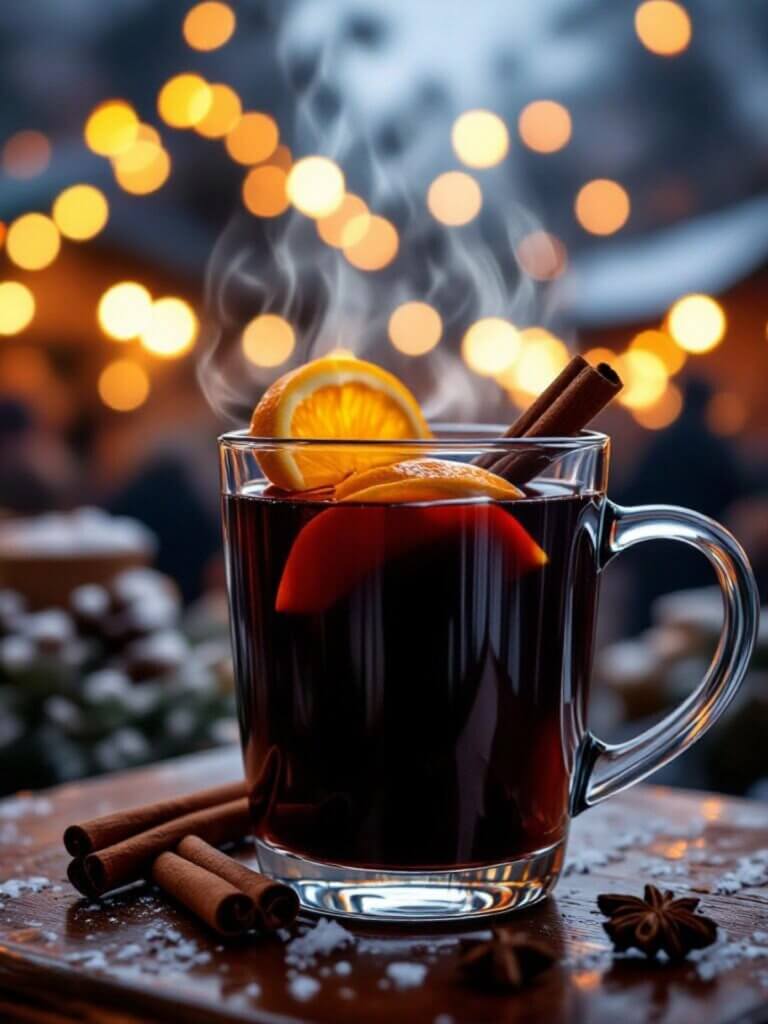
Rétes — Hungarian Strudel
Delicate pastry with sweet fillings such as apple-cinnamon, cherry, poppy seeds, or sweet cheese.
Crispy, flaky, and full of flavor, strudel is a sweet counterpoint to the savory street food.
Warm is best. Try multiple flavors — apple-cinnamon is classic, but cherry or poppy seed can be a delightful surprise.
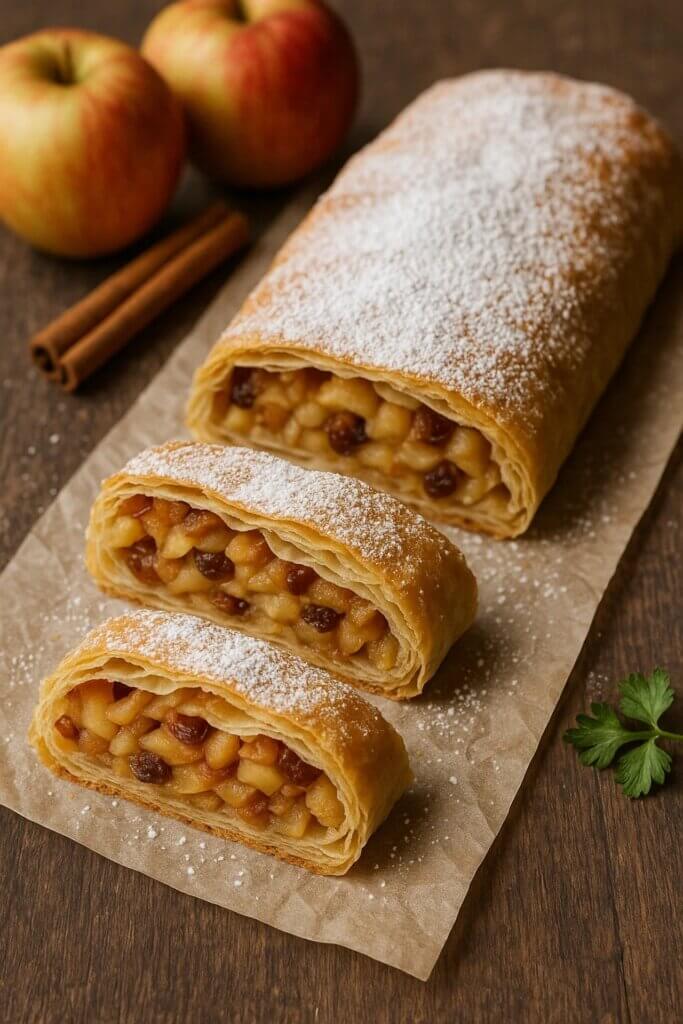
What makes Hungarian Rétes unique is its ultra-thin, hand-stretched dough, which is almost translucent and elastic, creating a delicate yet chewy texture that sets it apart from Austrian or German strudels. Traditional fillings go beyond apple and cherry to include poppy seeds, sweet cheese (túró), nuts, and dried fruits, often enhanced with vanilla or cinnamon. During baking, the strudel is brushed with butter for a golden, slightly crispy crust, while keeping the filling moist and flavorful. Served warm and cut into long strips, Hungarian Rétes offers a perfect balance of crispy exterior and tender, aromatic interior, making it a truly distinctive treat among European strudels.

Mézeskalács — Honey Gingerbread
Traditional Hungarian honey gingerbread cookies, often elaborately decorated in festive shapes such as hearts, stars, or Christmas trees.
Unlike generic gingerbread, Hungarian Mézeskalács is distinguished by its rich honey-based dough and intricate hand-painted icing, a craft passed down through generations. Each cookie reflects Hungary’s folk art traditions, making them not just a sweet treat but a cultural souvenir.
Admire the detailed decorations, then enjoy a small piece — or pick one as a gift. The combination of fragrant honey, spices, and delicate icing gives a flavor uniquely Hungarian, different from other European gingerbreads.

Sült gesztenye — Roasted Chestnuts
Sweet, nutty chestnuts roasted in iron barrels on the streets. The aroma alone draws visitors in, and the warmth of a paper bag in your hands is perfect for cold winter strolls.
Peel and eat while walking. The chestnuts are soft and sweet, and make a great snack between savory bites.

Kürtőskalács — Chimney Cake
A traditional Hungarian sweet pastry made from a yeast-based dough that is hand-rolled, wrapped around a wooden cylinder, and roasted over an open flame. Once cooked, it is coated in caramelized sugar and often topped with cinnamon, ground nuts, coconut, or cocoa.
What makes it uniquely Hungarian is the original dough recipe, which produces a soft, fluffy interior and a crisp, golden exterior. The slow roasting over coals gives it a distinctive smoky-sweet aroma that you won’t find in similar pastries elsewhere.
Eat it warm, peeling off pieces with your hands to enjoy the fresh caramelized crunch. Try different toppings at various stalls — cinnamon sugar is the classic, but walnuts, coconut, or cocoa add an extra Hungarian twist.
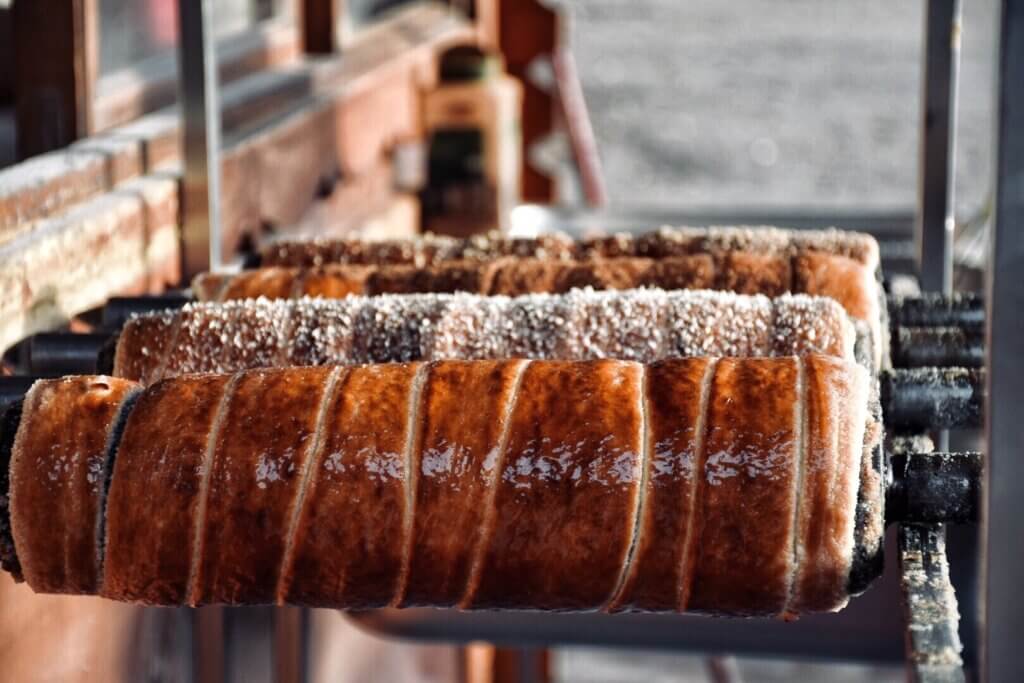
Palinka — Hungarian Fruit Brandy
A traditional Hungarian fruit brandy, typically 40–50° alcohol, distilled from locally grown fruits such as apricots, plums, pears, quince, or grapes.
What makes it uniquely Hungarian is the strictly regulated production process — only certain fruits and methods are allowed, and it must be distilled in Hungary. This gives Palinka a pure, aromatic fruit flavor unlike any other brandy in the world. It is a true part of Hungarian culinary heritage and a warming staple during winter festivities.
Sip a small amount to warm up while walking through the markets. Some stalls offer hot Palinka, which intensifies the aroma and makes it a perfect companion on cold winter days.
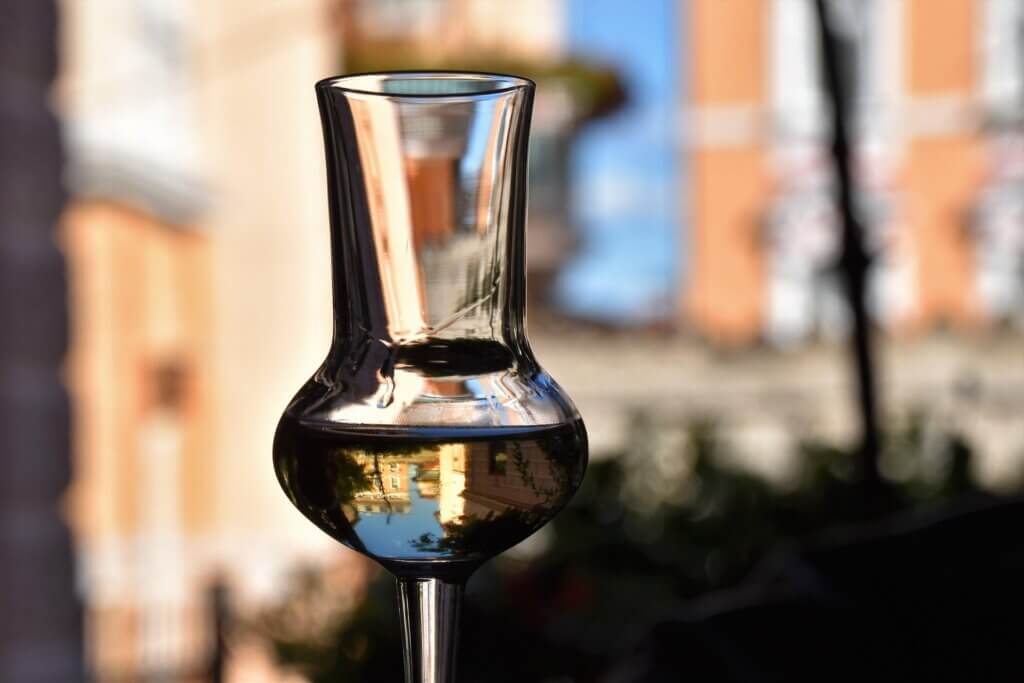
Halászlé — Fisherman’s Soup
A traditional Hungarian fish soup, made with fresh river fish such as carp, catfish, or perch, and generously seasoned with sweet and hot Hungarian paprika.
What makes it uniquely Hungarian is the intense, smoky paprika flavor and the use of local freshwater fish, often caught the same day. Unlike other fish soups in Europe, Halászlé is bright red, rich, and spicy, with a deeply aromatic broth that reflects Hungary’s centuries-old culinary tradition along the Danube and Tisza rivers.
Enjoy it with rustic bread or homemade noodles. Be prepared for a bold, paprika-forward flavor that is both warming and unmistakably Hungarian.
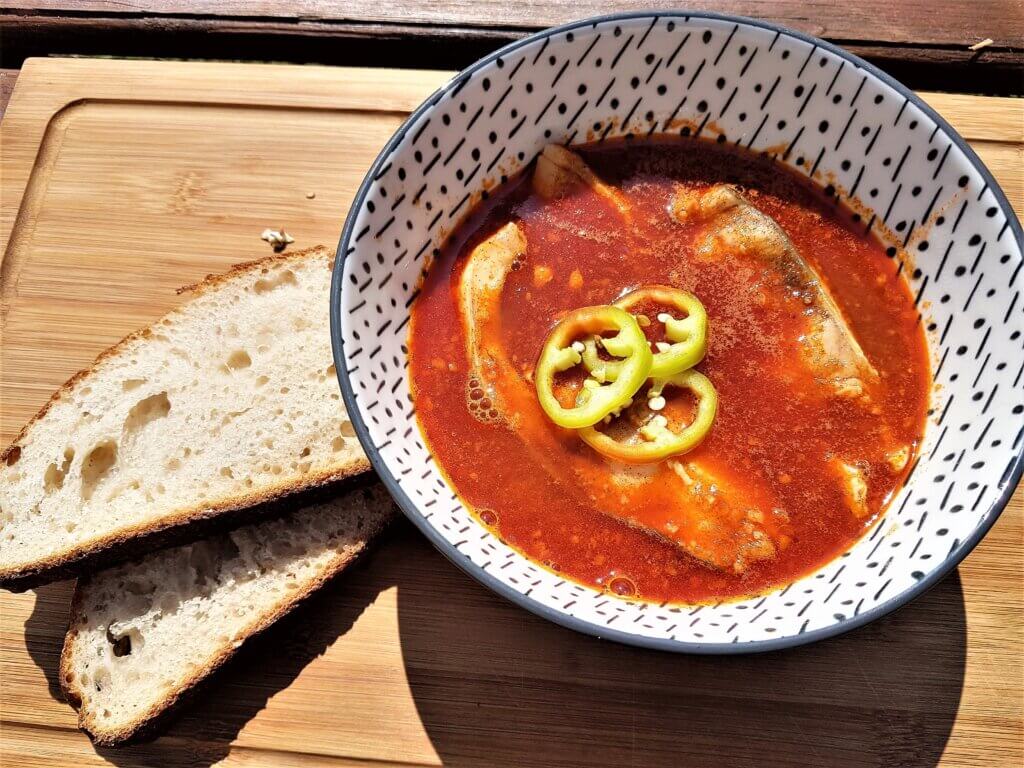
Gulyásleves — Hungarian Goulash Soup
A traditional Hungarian beef soup, made with tender chunks of meat, potatoes, carrots, onions, and generous amounts of sweet and smoky Hungarian paprika.
What makes it uniquely Hungarian is that Gulyásleves is a soup, not a stew, unlike similar dishes abroad. It’s traditionally cooked slowly in large cauldrons over an open fire, allowing the paprika and meat flavors to meld perfectly. Often served in rustic bread bowls, it embodies the hearty, comforting style of Hungary’s rural culinary heritage.
Enjoy it with fresh bread or directly from a bread bowl. Make sure to savor the rich paprika flavor — it’s the soul of authentic Hungarian goulash.
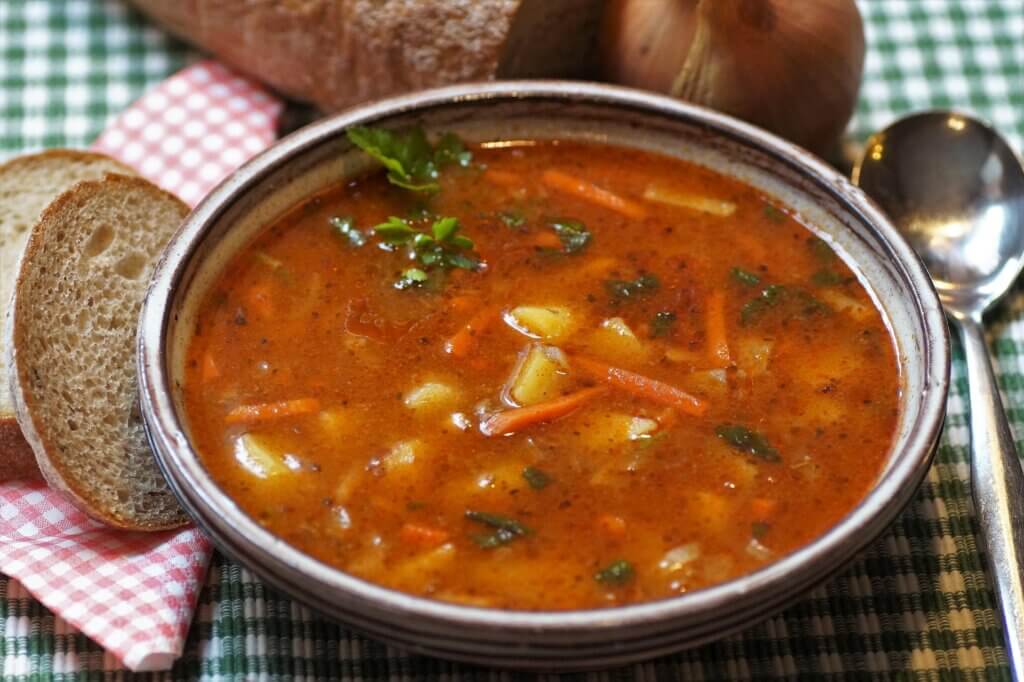
Töltött káposzta — Stuffed Cabbage
A traditional Hungarian dish of cabbage leaves stuffed with a blend of pork or beef, rice, and spices, slowly simmered in a tomato and sweet Hungarian paprika sauce and served with a dollop of sour cream.
What makes it uniquely Hungarian is the use of sweet paprika in the sauce and the specific seasoning of the meat filling, which gives the dish a distinctively rich, slightly smoky, and aromatic flavor that sets it apart from stuffed cabbage recipes elsewhere in Europe. Traditionally, it is cooked in large cauldrons, allowing the flavors to meld slowly, creating a hearty, comforting meal that is a staple of Hungarian Christmas tables.
Eat it with sour cream to balance the flavors. At Christmas markets, it’s often served in generous portions straight from the cauldron — perfect for a warming winter snack.

Kolbász — Hungarian Sausages
Traditional Hungarian sausages made from high-quality pork or beef, seasoned with sweet and smoky Hungarian paprika, garlic, and other spices. They are grilled or roasted and often served with mustard, hot stewed cabbage, and fresh bread.
What makes Kolbász uniquely Hungarian is the use of locally sourced paprika and traditional smoking methods, giving the sausages their characteristic deep red color, smoky aroma, and rich, spicy flavor. Each region in Hungary has its own variation, from mild to fiery hot, reflecting centuries of local culinary heritage.
Start with a classic smoked Kolbász, then try a spicier variety if you enjoy heat. Pair it with bread and mustard for a truly authentic Hungarian street-food experience.

Lángos — Hungarian Fried Dough
A traditional Hungarian street food made from yeast-based dough, deep-fried until golden and crispy, then brushed with garlic oil and topped with sour cream and grated cheese.
What makes Lángos uniquely Hungarian is its perfectly balanced dough — soft and airy inside, crispy outside — combined with the signature garlic and sour cream topping, which reflects Hungary’s simple but flavorful culinary traditions. It’s the most popular snack at winter markets, beloved for its hearty, comforting nature, and versatility.
Start with the classic garlic-and-cheese version to experience the authentic taste. Then explore creative variations — ham, bacon, paprika, or even sweet versions with sugar or chocolate. Always eat it hot for the full experience.

Tejfölös csirke — Chicken in Creamy Paprika Sauce
A traditional Hungarian dish featuring tender chicken simmered in a rich, creamy sauce made from sour cream, onions, and sweet Hungarian paprika, often served with galuska (Hungarian dumplings).
What makes Tejfölös csirke uniquely Hungarian is the balance of smoky-sweet paprika with creamy sour cream, which gives the sauce its signature flavor. This combination is rarely found outside Hungary and reflects the country’s love for hearty, comforting winter dishes. Traditionally, it’s cooked slowly in large pots, allowing the flavors to meld perfectly.
Enjoy it hot from a market stall, paired with dumplings or bread to soak up the creamy paprika sauce. The dish is best savored slowly to appreciate its rich, authentic Hungarian taste.
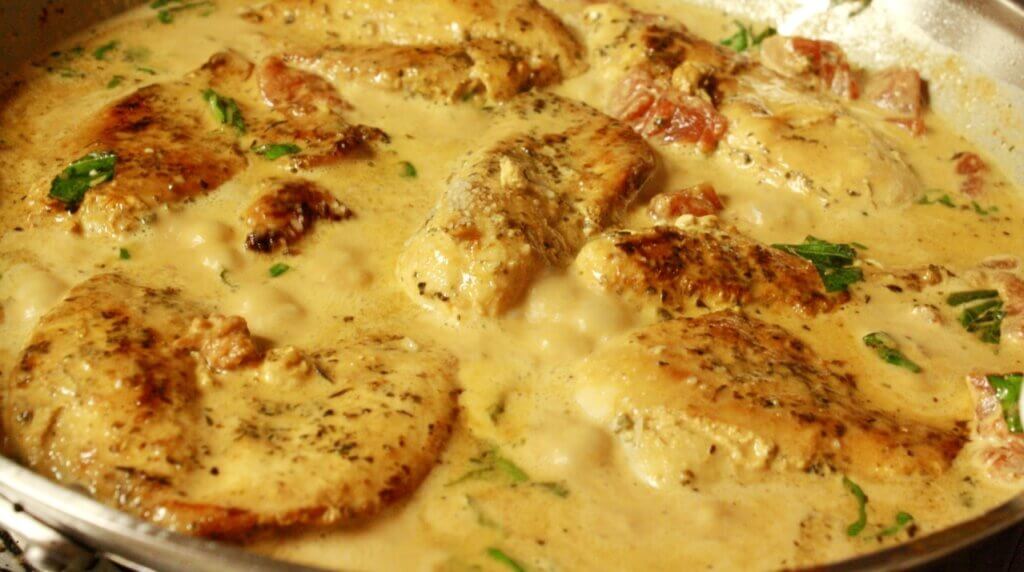
Visiting Budapest’s Christmas markets is a journey into the heart of Hungarian culinary tradition. Each treat, from the smoky, paprika-spiced Kolbász to the delicate, honey-sweet Mézeskalács, offers a taste of the country’s rich flavors and festive spirit. These markets are not just about food — they are about sharing warmth, savoring handcrafted recipes, and experiencing the joy of a Hungarian winter through every bite.
Whether you’re wandering between stalls, warming your hands on a cup of Forralt bor, or indulging in a freshly baked Kürtőskalács, the festive flavors of Budapest leave a lasting impression, making the city’s Christmas markets a truly unforgettable culinary adventure.